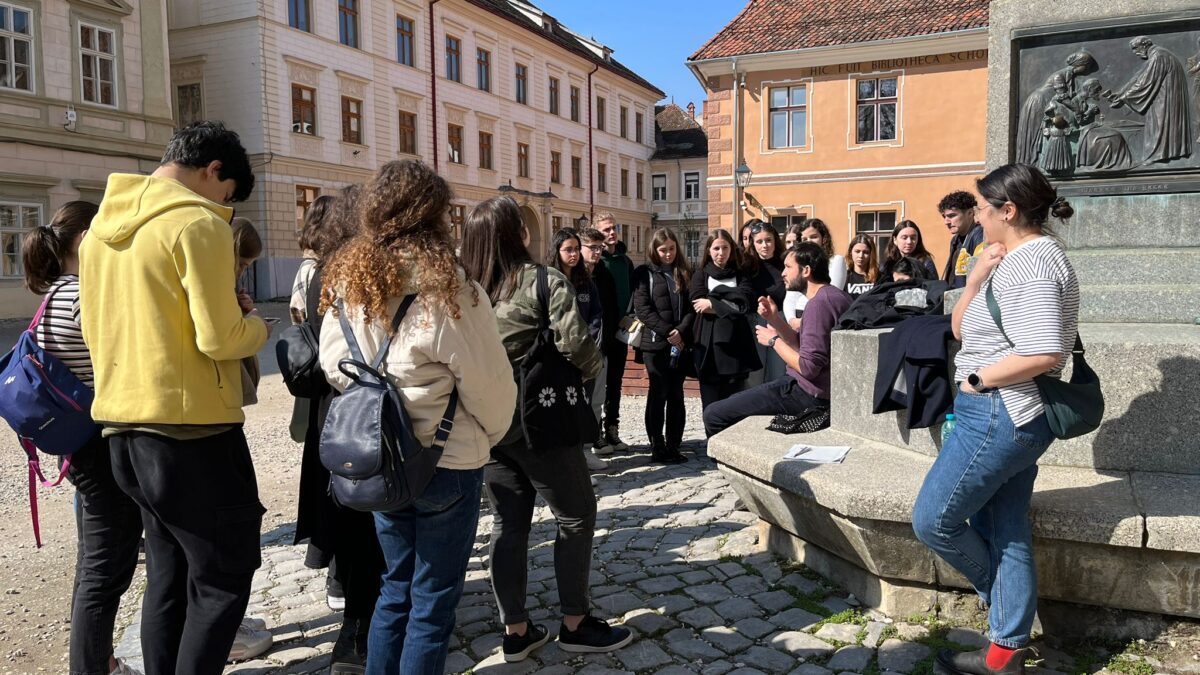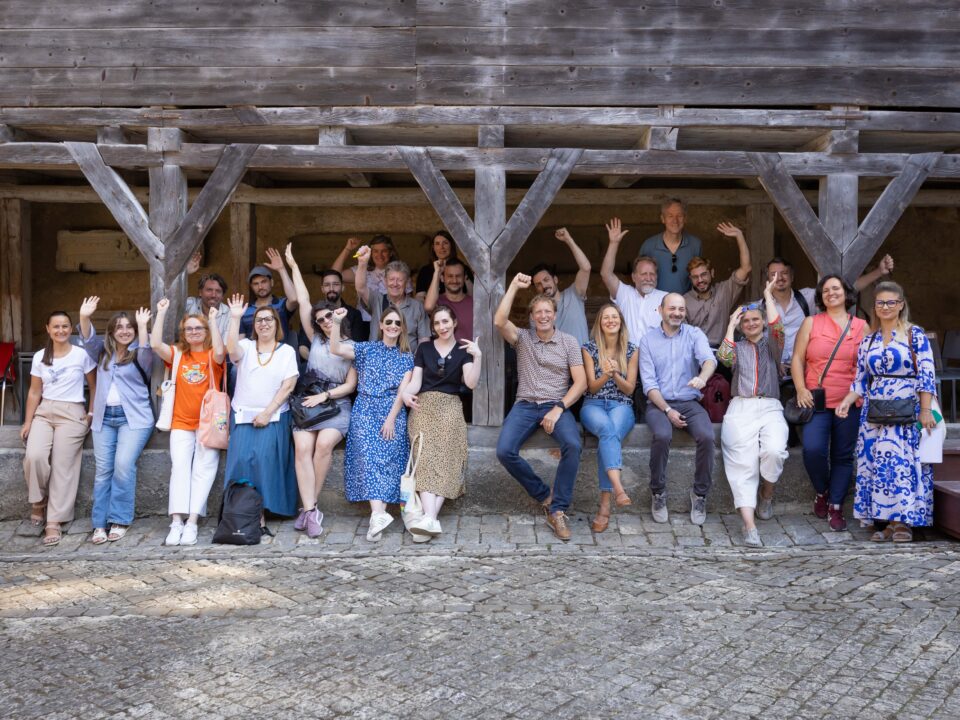

Brasov HUB-IN: ideas for a more livable historic center
HUB-IN workshops and Summer School involve young people in finding urban solutions closer to people’s needs
In April and May 2023, two workshops involving young people took place within the HUB-IN project, as part of the co-creation process of the regeneration of the historic centre of Brasov. The main solutions focused on more green spaces, resting places and furniture objects adapted to the needs of residents and visitors. The aim was to have much more attractive squares in the old centre by offering oases of tranquillity and special experiences.
Students and pupils contribute to the regeneration of Brasov’s historic urban area
For this co-creation process, on April 22nd students were first invited to take part in a treasure hunt to discover the hidden heritage of Brasov’s historic centre. The students, divided into 4 groups and with the help of the map on which Brașov’s values are hidden, during the day, identified historical and cultural landmarks of Brașov’s Citadel.
In May, the co-creation workshop took place over two days, the 27th and 28th. Students and pupils got to know the place, and connected the working groups with the squares where the works can be seen: Paul Richter Square, Brassai Square, Sf.Ioan Square, “Podul Țoalelor” Square (Apollonia Hirscher and Castelului intersection).
“Pupils and students conduct interviews in the targeted areas, collect information, analyse the qualities and shortcomings of the locations, befriend the local residents, visitors or entrepreneurs, find out the story of each place and try to treat the public space as their own, to become members of the respective communities, to explore the neighbourhood relationship” said Leea Mihăilă, ABMEE Director.
The group consists of 16 high school students, preparing for Architect/ Urban Planner professions, 8 students from Transilvania University, Faculty of Furniture Design and Wood Engineering, and 6 experts who provide mentoring.
The “Podul Țoalelor” square group, called Sonic (from Sonic the Hedgehog), aimed to collect as much information as possible about the place, identifying several shortcomings: the residents want peace and quiet, while the tourists see it only as a transit area, because there is no shade, no place to rest and the only interesting sight is the view towards Tâmpa. They want the area to be part of the tourist circuit. The working group produced a map of the shaded areas, a map of the obstacles, a map of the traffic flows, a map of the problems of the area and a summary map summarising all the data collected.

The Paul Richter Square group, called Zebra Design, focuses on the connection between nature, people and conviviality. They found that although the square is small, it lacks seating areas, which divides the community. There is a need for connecting elements that hold the community together. Given the limited space and the high flow of students who spend their breaks there, Zebra Design is thinking of small, comfortable, versatile furniture objects that create connections between those who stop by the square.
Brassai Square’s Green Gang was inspired by the greenery and the wonderful gangways connecting the place to the rest of the Citadel. They discovered a space marked by calm, stillness in contrast to the pulse of the city. Vegetation evolves unchecked, and Brassai Square is still hidden and unknown to many locals and visitors. There is a huge potential for privacy and refuge from the hustle and bustle of the historic centre, a place to be preserved and protected in the context of the attachment to the city wall.
The group of Sf. Ioan Square took its name, Les Papillons, from a former shop that sold bow ties on this site. They discover another place of transit, without decorative elements, the result of demolition and not necessarily a space intended as a square from the beginning. They will redefine the place, to change the idea of transit, by bringing vegetation into the square, to create an oasis of peace, calm, shelter, and relaxation.
The HUB-IN Summer School: rethinking the historic center
The ABMEE team and the mentors coordinating the co-creation process are preparing the HUB-IN Summer School, which will take place from 10-17 July 2023. It will include a mentoring and acceleration programme aimed at providing the students involved with skills and competencies related to Tactile Urbanism, Architecture, Lighting, Product Design, idea support and concept presentation in front of a jury that will be made up of representatives from local government, the private sector, the community of experts in the field and civil society. The programme will conclude with a co-design process of multifunctional urban furniture objects following the HUB-IN principles and responding to the problems identified by the students participating in the Mentoring Programme.
These activities are part of the HUB-IN project of ABMEE (Association “Agency for Energy Management and Environmental Protection Brasov”), funded by the European Union’s Horizon 2020 programme, which provides support to the municipality of Brasov in the process of regeneration of the historic urban area, following principles of sustainability, combating “tourism”, enhancing heritage and local specificity. In the Municipality of Brasov, the project is supported by the City Hall of Brasov, Transilvania University – Faculty of Furniture Design and Wood Engineering, BAZA, BAAB, HEBLU, and DeGraph 29.




